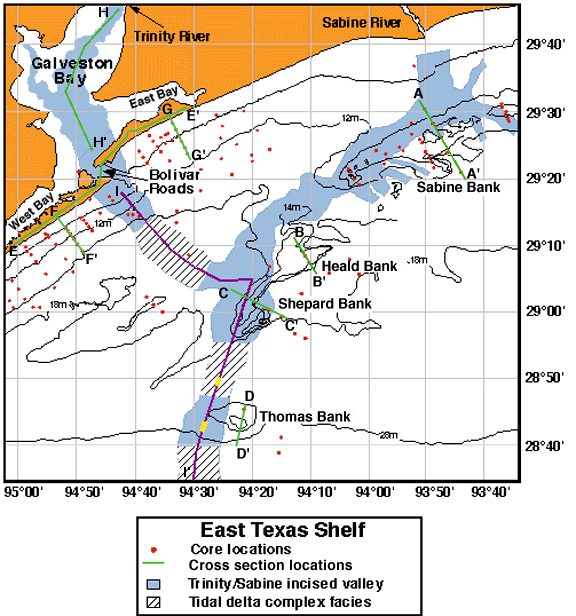
 During the last glacial eustatic lowstand the Trinity and Sabine Rivers merged on the central shelf. During the transgression these valleys were filled with fluvial/bay head delta/middle bay/lower bay and marine deposits.
During the last glacial eustatic lowstand the Trinity and Sabine Rivers merged on the central shelf. During the transgression these valleys were filled with fluvial/bay head delta/middle bay/lower bay and marine deposits.
Fluvial sands occupy the base of the valley and average 8 meters in thickness. The top of the fluvial deposits is marked by a prominent surface, the bayline surface, which exhibits prominent steps(aggradational events) that imply deposition during the rise in sea level. Hence, fluvial deposits within the valley occupy both the lowstand and transgressive systems tracts.
Because the rise in sea level was episodic, not continuous, the depositional environments that occupied the valley shifted landward in step-wise fashion, resulting in a backstepping facies architecture (Thomas and Anderson, 1994).
Besides the fluvial deposits at the base of the valley, reservoir-scale sand bodies are also produced within the bayhead delta and tidal delta environments.
